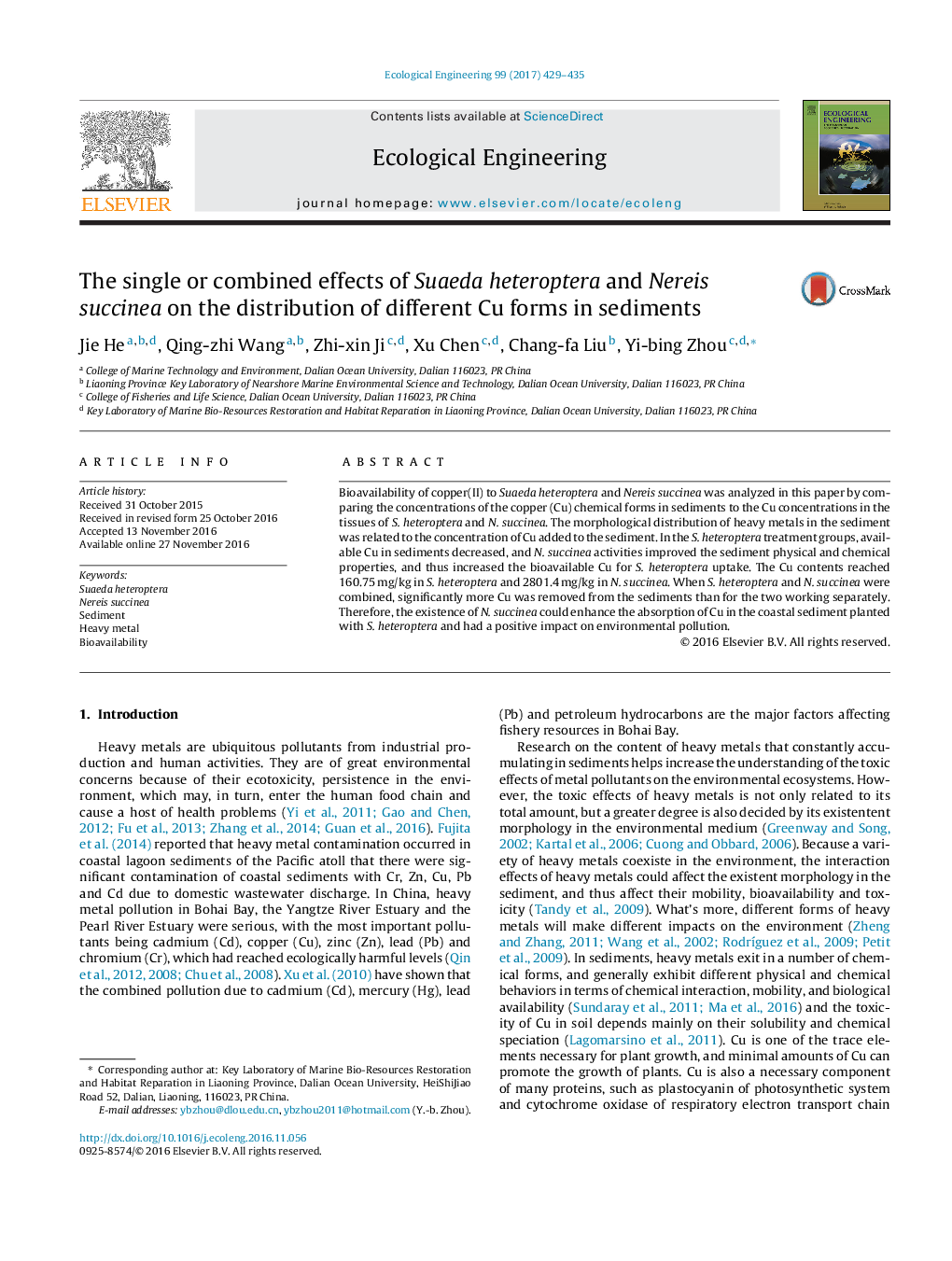| Article ID | Journal | Published Year | Pages | File Type |
|---|---|---|---|---|
| 5744012 | Ecological Engineering | 2017 | 7 Pages |
â¢The distribution of Cu forms was related to the concentration of Cu in the sediment.â¢The existence of N. succinea could enhance the absorption of Cu in sediments planted with S. heteropteraâ¢Effects of S. heteroptera and N. succinea in combination on distribution of Cu was significantly higher than the two working singly.
Bioavailability of copper(II) to Suaeda heteroptera and Nereis succinea was analyzed in this paper by comparing the concentrations of the copper (Cu) chemical forms in sediments to the Cu concentrations in the tissues of S. heteroptera and N. succinea. The morphological distribution of heavy metals in the sediment was related to the concentration of Cu added to the sediment. In the S. heteroptera treatment groups, available Cu in sediments decreased, and N. succinea activities improved the sediment physical and chemical properties, and thus increased the bioavailable Cu for S. heteroptera uptake. The Cu contents reached 160.75Â mg/kg in S. heteroptera and 2801.4Â mg/kg in N. succinea. When S. heteroptera and N. succinea were combined, significantly more Cu was removed from the sediments than for the two working separately. Therefore, the existence of N. succinea could enhance the absorption of Cu in the coastal sediment planted with S. heteroptera and had a positive impact on environmental pollution.
